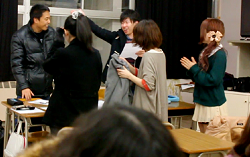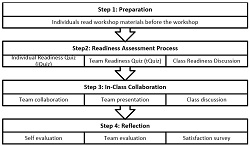Limitations of available research
While attrition literature offers abundant lessons and ideas for building retention programs for adult higher education, important limitations when applying secondary research to adult learning models include: a mismatched perspective between traditional institutions that serve young adults and non-traditional models that serve working adults; a static approach for a dynamic environment, and; perceiving the problem through a university-centric lens, as follows:
Mismatched perspective
Virtually all of the current literature focuses on traditional pedagogical models that rely on knowledge transfer from non-practitioner professors to inexperienced students. In comparison, non-traditional institutions have pioneered models that use practitioner-faculty to facilitate knowledge among working professionals. Developing inexperienced young adults who have limited life experience likely requires different approaches than those for developing professional adults with extensive life experience and full-time jobs.
Static approach for a dynamic environment
An increasingly diverse student demographic in the college compounds the challenge of applying secondary research to a dynamic environment. Adapting practices to meet the needs of emerging student populations likely requires shifting from methodologically myopic lecture-test paradigms to integrative approaches that combine practices from various theories and models to meet the developmental needs of a diverse student population in a dynamic environment.
Using a methodologically integrative approach requires that the faculty member become an active participant in the learning process with students (Tilley, 2007). Braxton, Milem, and Sullivan (2000) confirmed the practicality of this approach when they found a direct link between active learning environments created by instructors and student goal commitment.
University-centric lens
Most of the existing attrition literature focuses through a university-centric lens. While they are important symptoms, reducing attrition and increasing retention focus on a benefit to the university: keeping the customers to boost profitability and credibility of the institution. Effectively addressing attrition issues requires stepping out of a university-centric perspective to view the problem through the student experience (Meyer & Schwager, 2007). Viewing attrition problems from the student perspective allows an organization to take steps that strengthen the customer relationship while boosting the bottom line.
In other words, the most effective solution to attrition symptoms may focus on building procedures, policies, and practices that support student persistence to develop the knowledge, tools, skills, relationships, and values that translate into professional and life success--while enhancing the long-term viability of the institution.




